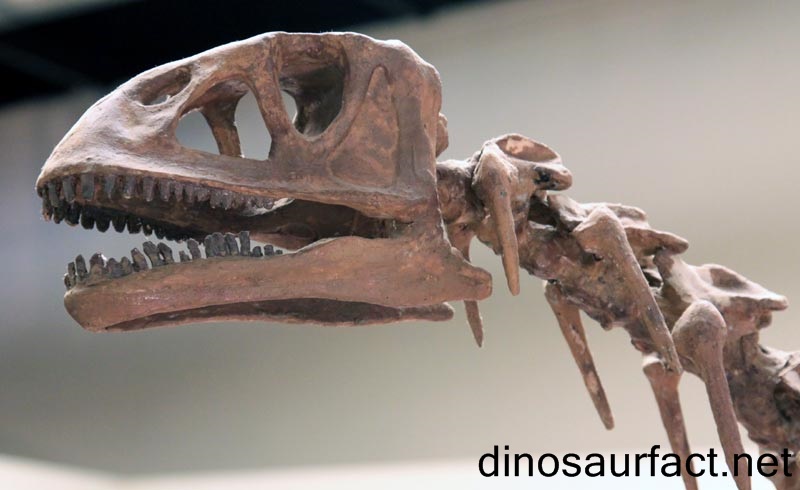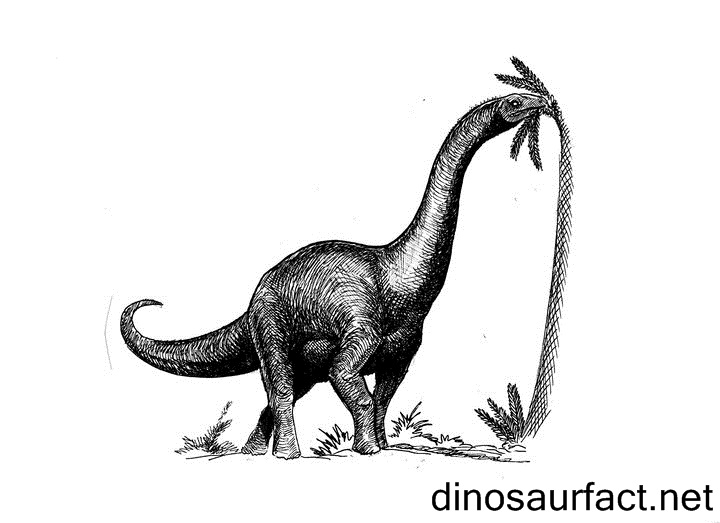 Click to visit the previous dinosaur bio
Click to visit the previous dinosaur bio
 |
|
 |
|
Kingdom: Animalia
Phylum: Chordata
Class: Sauropsida
Superorder: Dinosauria
Order: Saurischia
Suborder: Sauropodomorpha
Family: Sauropoda
Genus: Isanosaurus
 |
|
 |
|
 |
|

The Isanosaurus in Green means the "Isan Lizard". Not to be confused with Pisanosaurus, an ornithopod from South America, the Isanosaurus is one of the early sauropod dinosaurs. It is believed to have lived approximately 210 million years ago, nearly the end of the Late Triassic period and the advent of the Jurassic period. This dinosaur lived in the jungles of Asia, in what is now the country of Thailand. Very little data is available about the Isanosaurus.
The Late Triassic Period and Triassic/Jurassic boundary
The Upper Triassic is the final epoch of the Triassic Period. It is followed by the Jurassic Period. The Upper Triassic has three segments: the Carnian, Norian and Rhaetian stages. The upper Triassic, also known as the Late Triassic started 237 million years ago and extended up to 201.3 million years ago.
The upper Triassic rocks have yielded many dinosaur fossils worldwide. At the Triassic-Jurassic boundary, a catastrophic event led to the extinction of several animal species worldwide. This event is known as the end-Triassic extinction event. The reason for this event is still not known.
The Discovery of Fossils
The only known incomplete fossils was found in the Nam Phong Formation, close to the village of Nan Thaworn, in the province of Chaivaphum, Northeast Thailand. It was discovered in 1988 in a state of erosion, fixed in dark red sandstone from the region. The fossils include neck and back vertebrae, fragmentary ribs, two chevrons, the right sternal plate, the left thigh bone i.e. the femur and the right shoulder blade. French paleontologist Eric Buffetaut and his colleagues first described this dinosaur in 2000.
The dinosaur is named after the Isan region of Northeast Thailand. The only known species belonging to this dinosaur is the Isanosaurus attavipachi. The species name was given in honour of P. Attavipach, Director General of the Department of Mineral Resources, Thailand, due to his extensive support of Paleontology.
The Nam Phong Formation
The Nam Phong formation is a part of the Khorat Group. It consists of non-porous, red brown micaceous sandstones, siltstones and mudstones of fluvial origin. It ranges back from the Norian to Rhaetian stage of the Upper Triassic to the Lower Jurassic period. It is poorly explored, having produced fossils of only two species besides the Isanosaurus.
However, it did put Thailand in the paleontological world. Being still unexplored and unexploited, the formation might still hold some fossils and other paleontological data like preserved footprints. Thus, there is a hope more excavations at this place would yield fossil evidence that might help our understanding of the Earth as it was millions of years ago.
Physical Characteristics and Anatomical Features
The dinosaur is believed measured up to approximately 20 feet or 6.5 meters long. The size of the thigh bone is 75 centimeters. It is one of the first known sauropods and it displays aquadrapedal locomotion i.e. movement on four legs. The straight, robust thigh bone indicates that the Isanosaurus had long, straight column-like legs.
The dinosaur was of an intermediate size compared to other sauropods. Although this data might be erroneous, since the fossils that were discovered are supposed to belong to a juvenile dinosaur. This is because the neural arches of the vertebra of the discovered fossil were not fused together with the vertebral centra. It had an elongated tail, as can be deduced from its tailbone.
The thigh bone was slightly sigmoidal i.e. S-shaped. The vertebrae of the neck were convex at the anterior end and hollow at the back. The neck vertebrae also formed ball-socket joints with the neighboring vertebrae. The tail bones were however concave on both sides - this property is known as being amphicoelous. The neural spines at the back were very high. The vertebrae on the lateral sides were concave but not with a high degree of curvature.
Bones of the femur were less in number, compared to other sauropods. The absence of lesser trochanter is especially notable.
Related Dinosaur Species
Since not a lot of data is available for this dinosaur, the resemblances to other dinosaurs are fairly speculative. It does however, showcase some similarities with the basal sauropodomorph Antetonitrus, which was a large dinosaur particularly that of the S-curved thigh bone. The Isanosaurus is an intermediate link between more advanced sauropods and early sauropodomorphs.
About the Isanosaurus Dinosaur
The Isanosaurus is known by only a few bones found in the Nam Phong formation. It was an herbivore, feeding on leaves and shrubbery in the Southeast Asian jungles. It weighed approximately 2-3 tons. Unlike other early sauropodomoprhs which showcase bipedal behavior, the Isanosaurus is among the first sauropods to display quadrapedal characteristics. Despite this, due to the straight thigh bones, it can be said that the species, although quadrapedal did display the possibility of bipedalism.
The Isanosaurus species was nomadic. They moved through the swamps and jungles of Thailand in large herds. Large herds helped these docile creatures to scare off other carnivorous dinosaurs and archosaurs that could attack the younger ones of the Isanosaurus dinosaurs.
The dinosaur displays both sauropod and prosauropod characteristics. It has claws like the propsauropods but it exhibited quadrapedal behavior like the sauropods. These puts the dinosaur in an important place in the dinosaur lineage. The Isanosaurus is one of the earliest known sauropods. It replaced Vulcanodon, which belongs to the early Hettangian stage of the Jurassic (although a cladistics study by Yates later suggested that the Vulcanodon belonged to a later period of the Jurassic than previously suggested).
Being such an old species of dinosaur, the Isanosaurus deserves much attention. It is the link between two generations of dinosaurs. Understanding this species can be the turning point of our understanding of dinosaurs: the gargantuan, ancient creatures that once dominated Earth. However, much needs to be done in the field of analysis and soon, since the fossils are in a constant state of deterioration.
Someday, we aspire and hope to have uncovered all the secrets that are hidden with the creatures, in rocks buried eons ago, waiting to be dug out.
Index
Extinct Profiles
 Triassic Dinosaurs
Triassic Dinosaurs Jurassic Dinosaurs
Jurassic Dinosaurs Cretaceous Dinosaurs
Cretaceous Dinosaurs Pterosaurs
Pterosaurs Marine Reptiles
Marine Reptiles Dinosaur Extinction
Dinosaur Extinction